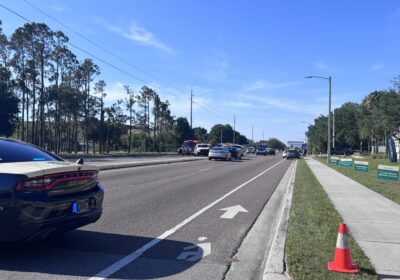Living the high-life
As the plane gains altitude, its engines roar with vicious tenacity and the trees and lakes’below shrink into oblivion. At 13,500 feet, the’aircraft’s side door swings open, emitting a’swirling howl.
I hear a faint voice over the torrent of cold wind, ‘Are you ready to skydive?’
My blood vessels swell with adrenaline and my palms sweat as I approach the exit, looking out at the clouds below. With both hands’securely gripping the side door, I take one look down and think, ‘Am I really going to do this?’
My whole life, I’ve’been in constant search’for adventure and thrills.
From competitive’paintballing to sponsored skateboarding, the quest for adrenaline has been my’calling and passion.
With three jumps under my belt now, skydiving has’become my addiction. I only’have five more to go before I receive my skydiving license and’jump solo.
Skydiving is a primitive form of thrill. At 120 mph,’skydivers maintain control and balance during a fall by’using their bodies to manipulate airflow.’ The sensation could be compared to sticking your head out a car window when’speeding down the highway.
During the first skydive, I knew the free falling would only last about a minute, but as I hurdled toward the ground I lost all sense of time and space.
After what felt like an eternity, I felt a sharp tug and looked up to see one of the most beautiful things that I have ever seen: an open parachute.
The landscape below’appeared more like a picture drawn out from some forgotten part of my memory, seeming so peaceful as I floated effortlessly back down to earth.
It was incredible.
Skydiving brings an adrenaline rush incomparable to’anything I have experienced’in life.
For most skydivers – myself’included – the rush comes from the danger of the sport. But in reality, new technologies -‘including safer parachutes and’modern jumping techniques – have dramatically improved the safety of diving for next’generation’s thrill seekers.
Each parachute is comprised of a main canopy that is detachable from the parachute, as well as a’spring-loaded reserve canopy in case the main canopy becomes tangled or fails to open.
Most reputable skydiving’facilities, such as Skydive City in Zephyrhills, require the use of Automatic Activation Devices'(ADDs) and Reserve Static Lines (RSLs) for parachutes on all their tandem and’student jumpers.
The ADD is a mechanism in the parachute that will electronically deploy the reserve canopy at a predetermined altitude if the skydiver is knocked out or unable to pull his or her own chute.
The RLS is a cable that assists the diver in’pulling the reserve chute if he or she cuts loose from the main chute.
For beginning skydivers, it’s a good idea to jump tandem, which means a certified jumpmaster is securely fastened to the back of you for the jump. He or she will release and steer the parachute’accurately.
Not all jump zones are created equally, so it’s wise to do a little research and check out varying’skydive facilities to get a feel for the sport.
Skydive City is located near the Zephyrhills Municipal Airport and offers a tandem first-jump lesson and dive for $199 and discounted group rates are also available.






